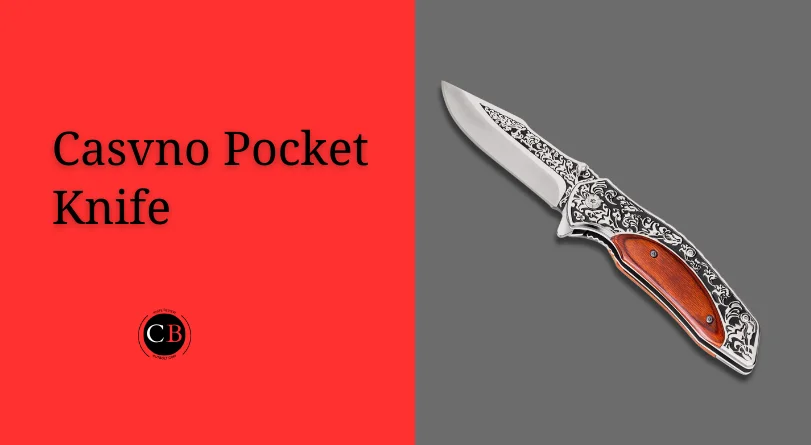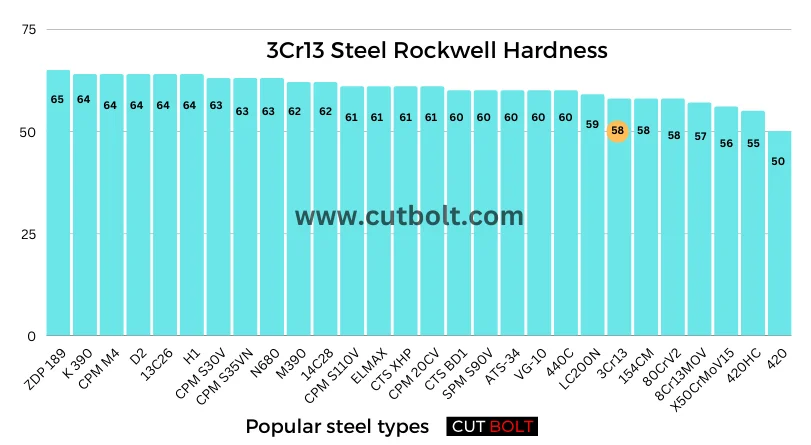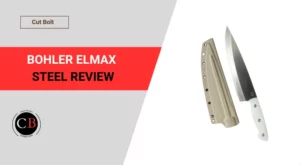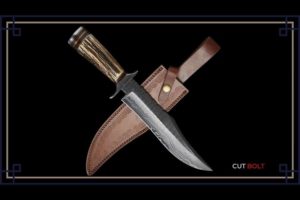Forget fancy alloys and stratospheric price tags. 3Cr13 steel, the underdog of knife steel, whispers promises of affordability and surprising performance. But is 3Cr13 steel good for knives or not?
With so many different types of steel and so many new premium steels available today, it’s not always easy to know which steel is right for your needs. This much I can reveal though – 3Cr13 is an inexpensive and durable steel that works very well for budget knives.
There are a variety of steels within the “Cr13 family” that are very similar, yet have slightly different properties. For example, the 8Cr13MoV steel compared to the 3Cr13.
Today, I am going to take a close look at 3Cr13 – its composition, its properties and characteristics, its suitability as a knife steel, and so on – everything that’s relevant to know about a steel and that may be critical to purchasing
Key Takeaways
- Balance of Hardness and Corrosion Resistance
- Affordability and Budget-Friendly Option
- Ease of Sharpening and Maintenance
- What is 3Cr13 steel?
- Other designations and standards of 3Cr13 steel
- Chemical composition of 3Cr13 steel
- What is the hardness (HRC) of 3Cr13 steel?
- Is 3Cr13 a stainless steel?
- Properties of 3Cr13 steel
- My opinion: Is 3Cr13 a steel good knife steel?
- Comparison: 3Cr13 vs other steels
- How good is 3Cr13 steel?
- 3Cr13 steel equivalents
- Final words: Is 3Cr13 steel good for knives?
What is 3Cr13 steel?
3cr13 steel, also known as 30Cr13, is a martensitic stainless steel from China that contains 0.3% carbon and 13% chromium. It is a low-end steel, currently used quite a lot in the knife industry. 3Cr13 has high corrosion resistance and wear resistance and is known to be a “good value for money” stainless steel.
Among knife manufacturers, 3Cr13 is most popular for lower-end knives, as its price and good quality allow for the production of affordable and durable knives. The designation 3Cr13 follows the Chinese national standard GB/T 1220 for steel classification.

Other designations and standards of 3Cr13 steel
3Cr13 steel is alternatively available under these designations:
| Standard | Proprietor |
| DIN X40Cr13* | Bonpertuis TP1MO |
| GB 30Cr13 | Daido S-Star |
| JIS SUS420J2Mod | |
| W-Nr 1.4034* |
Related: How good is 65Mn steel for knives?
Chemical composition of 3Cr13 steel
If you want to understand a steel, you need to know its individual alloying elements. From the name, you can easily identify the two main elements that make up this steel, which are carbon (C) – 0.3% and 13% chromium (Cr). But these are not the only elements that make up this steel.
Here you can find the full list of elements that make up this steel:
| Element | Portion | Effect |
| Chrome | 13.0% | Improves wear resistance, heat resistance and scale resistance. It increases tensile strength because it acts as a carbide former. Use of rust-free or stainless steel, as it increases corrosion resistance from a mass proportion of 12.2%. Reduction in weldability. |
| Carbon | 0.3% | Increasing hardness and tensile strength. In larger quantities, increase in brittleness and reduction in forgeability and weldability. |
| Manganese | 1.0% | Improves hardness and tensile strength. |
| Nickel | 0.6% | Nickel increases tensile strength and yield strength. From 8% increase in corrosion resistance. |
| Phosphorus | 0.04% | Increases tensile strength, hardness and corrosion resistance but also brittleness. |
| Sulfur | 0.03% | Increases machinability but also brittleness. |
| Silicon | 1.0% | Improves strength. |

What is the hardness (HRC) of 3Cr13 steel?
The Rockwell hardness of 3Cr13 is 54 HRC on average, but can vary between 50-58 depending on the manufacturer and depends on the heat treatment applied to the steel.
Basically, the less carbon contained in the steel, the lower its hardness. 3Cr13 contains less carbon than the average premium steel, which gives it a medium hardness.
Experienced knife enthusiasts will agree that the hardness level of this steel is equivalent to what is found on average in pocket-friendly knives. The advantage of the lower hardness is that the blade is not brittle – meaning it can chip or break, thus and withstand tough tasks.

Is 3Cr13 a stainless steel?
3Cr13 steel is a rust-free steel but NOT a stainless steel. Why? To be considered rust-free it must contain a minimum of 10.5 – 13% chromium dissolved in the austenite or ferrite (see here), depending on the definition. 3Cr13 contains 13% chromium, so it meets this requirement.
However, to be stainless steel, the sulfur and phosphorus content (so-called iron companion) must each be below 0.025% (see here). 3Cr13 contains 0.04% phosphorus and 0.03% sulfur, just above this level, and is therefore not a stainless steel.
The fact that it is a “cheap steel” means that it costs less and still offers good performance. Those who want top value for money can not go wrong with a knife made of 3Cr13 rust-free steel!
Properties of 3Cr13 steel
According to the chemical composition and hardness of 3Cr13, it offers the following properties and characteristics:
1. Edge retention
The edge retention of Cr13 steel is good when measured against the price of this steel. Not great good, and significantly lower than many modern high-end steels, but for low-end steel it is pretty perfect. In other words, for its price, the edge retention is pretty good, and if the edge gets dull, it is quickly sharpened again.
2. Corrosion resistance
With its comparatively low carbon content and a fair amount of chromium, 3Cr13 resists corrosion quite well. While the vast majority of stainless steels will still rust somewhat over time if exposed to adverse conditions repeatedly and for extended periods, 3Cr13 will hold up.
3. 3Cr13 steel sharpness
One of the top qualities of 3Cr13 steel is that it is extremely easy to sharpen. And we all know how great that is, especially “in the field”. In this regard, 3Cr13 is a great steel for anyone learning to sharpen their knives without a lot of special tools or accessories.
4. Hardness
One of the major factors that contribute to the hardness of a steel is its total carbon content. Since 3Cr13 is on the lower end of the spectrum with its carbon content, it makes sense that it would only have a moderate hardness compared to some premium steels.
5. Machinability
3Cr13 steel is known for its good machinability. The term “3Cr13” refers to a type of stainless steel that contains about 0.3% carbon and 13% chromium. This composition provides a balance of hardness, corrosion resistance, and machinability.
Here are some points related to the machinability of 3Cr13 steel:
- Cutting Ease: 3Cr13 steel is relatively easy to cut and machine. It does not pose significant challenges during machining processes.
- Annealed State: Machining is generally performed when the steel is in the annealed (softened) state. This state makes it more amenable to cutting, drilling, and other machining operations.
- Lathe Operations: 3Cr13 steel can be turned on a lathe with good results. The machinability allows for the creation of various shapes and components.
- Grinding: The steel is also amenable to grinding operations. This is particularly useful for achieving precise dimensions and smooth finishes.
- Welding Considerations: While 3Cr13 steel is machinable, it’s important to note that welding may present challenges. Preheating and post-weld heat treatment might be necessary to avoid issues like cracking.
- Applications: Given its machinability, 3Cr13 steel is often used in the production of knives, scissors, and other cutting tools.
6. Toughness
One of the areas where 3Cr13 shines is generally its toughness. 3Cr13 is a very tough steel that does not chip or break easily. Very often hardness and toughness are competing factors in the overall life of different steels. As a steel becomes harder, it tends to become more brittle, reducing its overall toughness.
Its good toughness makes 3Cr13 a good steel for things like machetes, tomahawks and throwing knives, as well as all sorts of other blades that can or should be taken hard.
My opinion: Is 3Cr13 a steel good knife steel?
Yes, 3Cr13 is a perfect knife steel in its price segment. It has good hardness and therefore good edge retention, high wear and corrosion resistance. It is also extremely easy to sharpen and very affordable to boot.
3Cr13 has good corrosion resistance, is easy to sharpen, and its toughness is also good enough that it can be pushed hard.
Especially, the popularity of 3Cr13 steel knives – including kitchen knives, hunting knives, knives for everyday use, etc. – illustrates the good performance of this steel without having to dig deep into your pocket.
In short, it is a great steel for low-end or entry-level knives, which explains why 3Cr13 has gained such a large presence in the knife market.

Comparison: 3Cr13 vs other steels
Before choosing a particular knife steel, it’s important to know how it compares to other popular knife steels. The following list contains popular steels that are roughly in the same league as 3Cr13.
3Cr13 vs 1055 carbon steel
Although these two steels are in the same price range, they have significant differences in terms of performance. The 1055 carbon steel has a high hardness and offers better edge retention. But that doesn’t make it brittle by any means. One area where 3Cr13 outperforms this steel is that 3Cr13 is DEUTHY less susceptible to rust with 13% chromium.
3Cr13 vs 420J2 steel
Many knife experts agree that these two steels have a lot in common. However, the 420J2 has a slightly higher hardness, which translates into better edge retention. Since it also has a higher chromium content, 420J2 steel is good at resisting corrosion and is used, for example, to make surgical knives, diving knives, scissors, etc.
3Cr13 vs 420 steel
Both 3Cr13 and 420 steel are stainless steels and thus offer good corrosion resistance. This means that they are suitable for use in marine environments or wet conditions. However, 420 steel is quite soft due to its low carbon content and does not hold its sharpness as long compared to 3Cr13. 420 steel is best suited for making decorative knives or swords. For everyday use, 3Cr13 is a much better choice.

How good is 3Cr13 steel?
3Cr13 is a good stainless knife steel for its money. While one might argue that there are premium steels available for making knives, a simple counter-argument is that premium steels are not automatically better and, most importantly, cost significantly more. Because on the one hand, cost is obviously an issue when budgets are too tight. On the other hand, 3Cr13 has good corrosion resistance, is easy to sharpen, and its toughness is also good enough that it can be pushed hard.
Especially the popularity of 3Cr13 steel knives – including kitchen knives, hunting knives, knives for everyday use, etc. – illustrates the good performance of this steel without having to dig deep into your pocket.
3Cr13 steel equivalents
According to its chemical composition, 3Cr13 steel is close to 420J2. It has the same properties, and quality/price are about the same. 1Cr13 and 2Cr13 are also in the same range, but 3Cr13 is harder and has higher strength.
Sometimes 3Cr13 is also compared to AUS-4 as they are quite similar. However, AUS 4 has a slightly higher carbon and chromium content than 3Cr13 with 0.4% carbon and 14% chromium.
Last but not least – if you are willing to dig a little deeper into your pocket, you should also take a look at VG10.
Final words: Is 3Cr13 steel good for knives?
Is 3Cr13 steel good for knives? Yes, if you are looking for a quality knife at an affordable price, you can’t go wrong with knives made of 3Cr13 stainless steel. 3Cr13 shines for budget-conscious cooks seeking dependable performance without breaking the bank. Its ease of sharpening and decent edge retention make it a capable kitchen companion.
However, it lacks the edge-holding prowess of pricier steels and might not withstand heavy-duty tasks. 3Cr13 steel delivers value and functionality, but for those demanding professional-level performance, it might be worth exploring pricier options.



